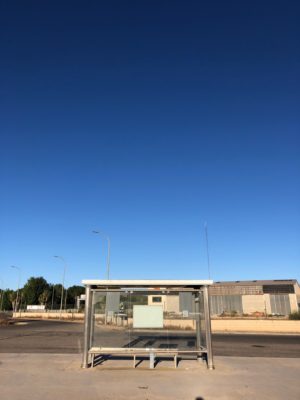Search
To search for an exact match, type the word or phrase you want in quotation marks.
A*DESK has been offering since 2002 contents about criticism and contemporary art. A*DESK has become consolidated thanks to all those who have believed in the project, all those who have followed us, debating, participating and collaborating. Many people have collaborated with A*DESK, and continue to do so. Their efforts, knowledge and belief in the project are what make it grow internationally. At A*DESK we have also generated work for over one hundred professionals in culture, from small collaborations with reviews and classes, to more prolonged and intense collaborations.
At A*DESK we believe in the need for free and universal access to culture and knowledge. We want to carry on being independent, remaining open to more ideas and opinions. If you believe in A*DESK, we need your backing to be able to continue. You can now participate in the project by supporting it. You can choose how much you want to contribute to the project.
You can decide how much you want to bring to the project.

Seen on Google Maps, the Chiasso railway network looks like a frayed rope. The route of the tracks follows the foothills of the Penz mountain and then, when it returns, it divides the map of this town located on the border between Switzerland and Italy. Amateur botanist Ernesto Schick (1925-1991) spent a decade studying the wild flora that grew in the vicinity of the Chiasso International Railway Station. Schick identified more than 700 plant species, some of them in danger of extinction. The conclusions of his meticulous work would later be published in the volume Railway Flora (1980), a study carried out outside of the academy but one which would exert a significant influence both in the field of science and in the field of landscape theory. In addition to its value in terms of the study of nomadic ecosystems, Schick´s research and the formulation of this new botanical category renewed interest, regardless of the discipline, in identifying and thinking about other forms of weak and mutant coexistence sustained by megastructures such as the Chiasso train station.
The aim of this issue, succinctly titled Transportation, is to broaden discussion about passenger transport and it does so, on the one hand, by playing with the notion of infrastructure and making it elastic and, on the other, favoring a form of writing that, due to its exploratory nature, assumes a weak and marginal position within the framework of the debate that concerns us. I think of these texts as if they were the herbs that Schick sketched in his notebook, growing in a place that apparently does not belong to them.
In Tracción (Traction), Antoni Hervás writes in first person about the impact of transportation on his artistic practice, at times a common thread that unites his work while at other times as a final phase of the production that affects the format of its presentation. Writing constitutes an important part of Pol Merchan´s work. In his Travel Diaries, he re-reads the writings of David Wojnarowicz and Ida Applebroog, texts that undo the separation between public and private events and which in their capacity to stir emotions expose another modality of mobility, that of the inner journey. Miquel À. Riera writes about “poorly communicated places” to reveal the unequal distribution of territory, establishing a link to the inability of generating meaning: what is the relationship between infrastructure and language? Huw Lemmey offers a brief history of the London Underground, with reference to episodes that have contributed to its definition as a cultural icon and as a total work of art. Lastly, in Feathery Body Logistics, Aimar Arriola describes Miguel Benlloch’s performance entitled Transit to speak about the transportation of bodies, of round trips, of “propagating capacity” and of flourishing and circulating without fear. The texts freely dialogue with infrastructure and at the same time describe the ambivalent, intimate but radically impersonal nature of our relationship with systems of mobility and with the possibility of transporting ourselves.

Marc Navarro is a curator and writer. He has collaborated with art-projects and institutions such as the Sala d’Art Jove, the Centre Cívic Can Felipa, Fundació Joan Miró and Centre d’Art La Panera. His texts have appeared in exhibition catalogues and various publications such as: A*Desk, El Estado mental and Revista Artiga.
Photo: Silke Briel
"A desk is a dangerous place from which to watch the world" (John Le Carré)